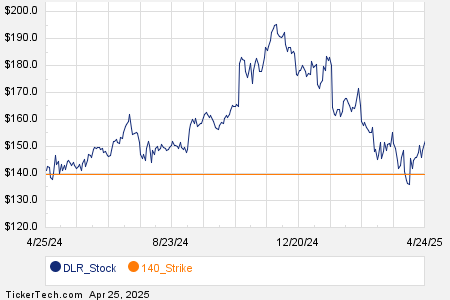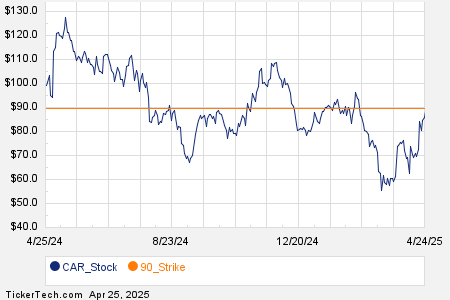After February 13th’s unexpected January CPI report, the stock market saw a significant downturn. Investors were skeptical of the potential rate cuts due to persistent inflation, leading to concerns about the future of growth stocks and an increased interest in bargain stocks.
While nothing is guaranteed in the market, mean reversion often occurs in response to significant performance differences between growth and value stocks. The recent surge in growth stocks related to artificial intelligence created a wide performance gap between these stocks and value stocks, the latter of which are currently trading at remarkably low valuations.
With the shift in monetary policy expectations, the best bargain stocks present an attractive risk-reward scenario. Market participants had initially anticipated six rate cuts from the Federal Reserve starting in March, but Fed Chair Powell dismissed this outlook in a 60 Minutes interview. The recent CPI report may have delayed the timeline for rate cuts, resulting in an extended period of higher interest rates. This shift could prompt investors to pivot from growth stocks to value stocks.
General Motors (GM)

General Motors (NYSE:GM) experienced several challenges in 2023. Issues such as increased labor costs due to new union contracts, a sluggish demand for electric vehicles, and intensified competition created significant roadblocks for the company. As a result, General Motors’ stock price dropped to 2019 levels.
However, there is a silver lining, and General Motors emerges as one of the best bargain stocks to buy. The company has pledged to adapt its 2024 budget to counteract the additional labor costs resulting from the new union contract. Moreover, the announcement of a $10 billion accelerated share repurchase in November 2023 has provided further support to shareholders.
On January 30th, the stock surged by 7.8% following a robust Q4 sales performance and profit beat. Despite the challenges in the electric vehicle market and the repercussions of a UAW strike, General Motors delivered solid quarterly results with revenues of $42.9 billion, reflecting a marginal 0.3% annual decline.
For the entire year, the company recorded a revenue of $171.84 billion, marking a 9.64% increase from 2022. Additionally, the net income saw a 1.9% rise to $10.12 billion. Looking ahead, the company has forecasted a bullish profit outlook for 2024, estimating a net income ranging from $9.8 to $11.2 billion and diluted EPS between $8.50 and $9.50. With these projections, GM’s stock is trading at an astonishingly low 4.5 times forward earnings.
General Motors has scaled down its electric vehicle rollout but still anticipates business growth. Particularly, the company is witnessing significant interest in its Chevrolet, GMC, Cadillac, and BrightDrop EVs. Management foresees the U.S. EV portfolio achieving variable profitability in the second half of 2024.
Given General Motors’ robust financial performance and optimistic outlook for 2024, analysts are bullish, with 17 “buy” ratings and an average price target of 49, suggesting a potential over 20% gain.
United Airlines (UAL)

Source: travelview / Shutterstock.com
United Airlines (NASDAQ:UAL) holds one of the most appealing growth prospects in the airline industry, yet its price-to-earnings ratio remains in the mid-single digits. Furthermore, with air traffic recovering to pre-pandemic levels, there is a potential for further strengthening as corporate travel makes a comeback. These factors have prompted analysts to express predominantly bullish sentiments, foreseeing over 30% upside from the current prices.
United Airlines is embarking on a substantial expansion and modernization of its fleet as part of its growth plans. The airline intends to introduce over 200 widebody planes to cater to the increasing demand for air travel and enhance its services. Currently, it has added over 170 new aircraft to its fleet and aims to bring in more than 800 new planes by 2032.
This expansion is a key component of United’s broader strategic growth strategy, which involves the augmentation of its trans-Atlantic and trans-Pacific flights. The company is set to launch new nonstop flights to the Asia-Pacific region, including destinations such as Manila, Hong Kong, Tokyo, and Taipei. Additionally, United is forging strategic partnerships with global airlines to strengthen its network. Its collaboration with Emirates, for instance, is expected to significantly extend its presence in the Middle East and India.
The Rise of Vital Energy: A Hidden Gem in the Energy Sector
The Acquisition Spree
With a string of acquisitions totaling almost $2 billion in 2023, Vital Energy (NYSE:VTLE) has solidified its position as a major player in the Permian. The company’s strategic acquisition of assets from Driftwood Energy, Forge Energy, Henry Resources, Tall City Exploration III, and Maple Energy Holdings has proven to be a game-changer in the energy sector.
Strategic Advantages
These acquisitions have delivered multifold benefits. Firstly, they have significantly bolstered the company’s presence in the Midland and Delaware Basins. Secondly, Vital Energy has expanded its oil production capacity and added thousands of net acres, effectively doubling its size. Thirdly, the acquisitions have reshaped its production profile, with oil accounting for 48% of the total volume, indicating a significant transformation for the company.
Attractive Takeover Prospect
Given the rampant mergers and acquisitions activity in the Permian Basin, Vital Energy stands out as an appealing candidate for a potential takeover. Its aggressive expansion and increased oil weighting make it an attractive prospect for potential suitors in a consolidating market. Furthermore, the company’s strategic focus on Tier 2 assets aligns with the industry trend of pursuing acquisitions that offer long-term drilling opportunities and operational synergies.
Prudent Management Focus
At present, the company’s management is committed to the integration of these acquisitions and extracting cost synergies. According to the latest investor presentation, the management anticipates generating $375 million in free cash flow in 2024. This substantial cash flow projection positions VTLE stock as one of the most enticing bargain stocks to consider in the energy sector, trading at an appealing 4 times forward free cash flow.
On the date of publication, Charles Munyi did not hold (either directly or indirectly) any positions in the securities mentioned in this article. The opinions expressed in this article are those of the writer, subject to the InvestorPlace.com Publishing Guidelines.



